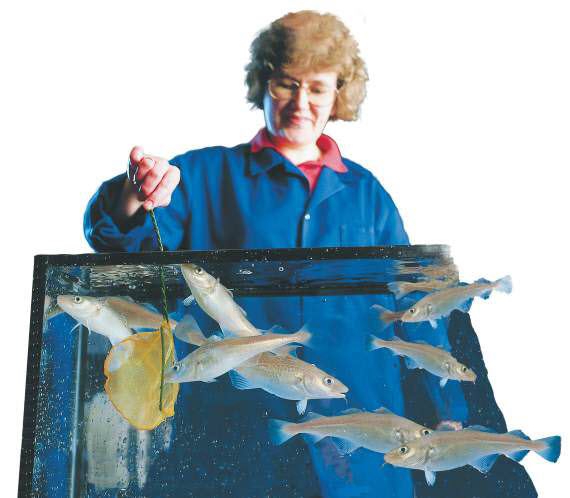
|
|
Year-old cod fry – hatched and raised at SINTEF’s Aquaculture Centre – here being looked after by Marte Schei. Photo: SINTEF/Roar Øhlander |
SINTEF scientists were the first in the world to persuade thousands of cod fry to grow on feed that had not been harvested from natural sources, but was cultivated in the laboratory.
As a result of the growing interest in cod farming in the years following this breakthrough in 1987, professionals from the aquaculture industry have regularly visited SINTEF’s aquaculture centre in order to learn about fish-feed cultivation.
Choosy fish larvae
While salmon larvae eat dry feed from day one, marine fry such as those of cod must be given live food.
As far back as the early 1980s, some farmers were trying to raise cod fry. Some kept them in semi-enclosed seawater lagoons, while others used tanks on dry land, which they filled with seawater. They used nature’s own sources of food and found that there was a timing problem. The timing of zooplankton blooms cannot be accurately predicted, and if the fish eggs hatched before a bloom, the larvae starved to death.
Cultivated zooplankton
This was why SINTEF went in for cultivating live feed.
The food that cod fry eat in the wild is too expensive to cultivate, but other types of zooplankton can be cultivated. The fry that SINTEF produced were raised on two such varieties; rotifera and the brine shrimp Artemia, as well as cultivated algae.
